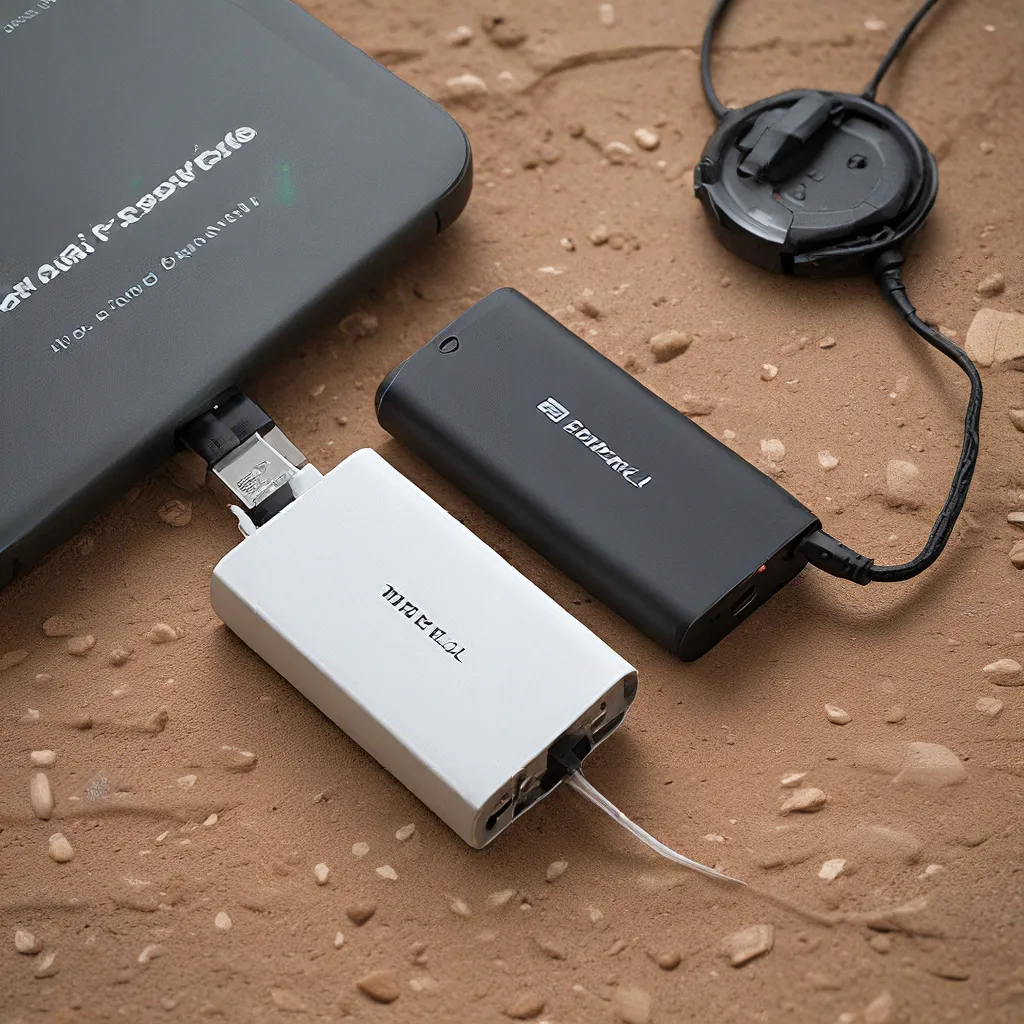
The Power Struggle
It’s a common scenario we’ve all experienced – that sinking feeling when your smartphone battery dips into the red, and you’re miles away from a power outlet. For the outdoor adventurer, the stakes are even higher. When your tech lifeline is on the brink, getting caught without backup power can turn a wilderness trek into a precarious situation.
As an avid hiker and gadget enthusiast, I’ve faced this dilemma more times than I’d like to admit. Traditional powerbanks and battery packs just don’t seem to cut it anymore, especially when you’re pushing the limits of your devices in remote, off-grid environments. That’s why I was thrilled to discover the latest innovation in portable power – compact fuel cell powerbanks.
The Rise of Fuel Cell Tech
Fuel cells have been around for decades, but recent advancements have made them a game-changer for the modern adventurer. These incredible devices use an electrochemical reaction to generate electricity, with the only byproduct being clean, distilled water. No more lugging around heavy, bulky batteries or worrying about recharging in the great outdoors.
Plug & Save Energy Products has been at the forefront of this fuel cell revolution, pioneering compact powerbank designs that pack a serious punch. Their latest offering, the Honey Badger 50, is a true marvel of engineering. Weighing in at just 2 pounds, this portable power solution can charge your devices for days on a single refill of eco-friendly methanol.
The Honey Badger Advantage
What sets the Honey Badger 50 apart? For starters, its cutting-edge Ion Pair Membrane Electrode Assembly (MEA) technology. This innovation dramatically boosts the powerbank’s efficiency and performance, resulting in a higher power density and more compact packaging. In other words, you get more juice in a smaller, lighter package.
“Our collaboration with the US Department of Defense on the Honey Badger 50 fuel cell system opens the door to great opportunities and higher production volumes,” says Dr. Vasilis Gregoriou, Advent’s Chairman and CEO. “This enhanced version with our Ion Pair technology will set new benchmarks for fuel cell efficiency, longevity, and power density.”
But the Honey Badger’s advantages don’t stop there. Its thermal management features allow it to operate in a wide range of temperatures, from well below freezing to over 104°F. So whether you’re trekking through the Arctic tundra or the scorching Sahara, this powerbank has got your back.
The Fuel Cell Difference
Compared to traditional lithium-ion batteries, fuel cells offer several key benefits for the outdoor enthusiast. Lighter weight, longer runtime, and virtually limitless refueling – it’s a trifecta that’s hard to beat.
| Feature | Lithium-Ion Battery | Fuel Cell Powerbank |
|---|---|---|
| Weight | Heavier | Lighter |
| Runtime | Finite | Virtually unlimited with fuel refills |
| Recharging | Slow, requires power outlet | Rapid refueling with eco-friendly methanol |
| Temperature Performance | Struggles in extreme cold | Operates in wide temperature range |
| Emissions | None | Clean, water-only byproduct |
Fuel cells also have a distinct advantage when it comes to cold weather performance. Lithium-ion batteries tend to lose power and capacity when the mercury drops, but fuel cells like the Honey Badger 50 maintain their output even in frigid environments. That’s a crucial factor for anyone venturing into the icy unknown.
Powering Adventure, Sustainably
One of the most compelling aspects of fuel cell technology is its environmental impact. Traditional batteries contain toxic materials that can pollute the environment, but fuel cells like the Honey Badger 50 use a clean, renewable energy source – methanol. This bio-derived liquid fuel is both biodegradable and emission-free, making it a far more sustainable choice for the eco-conscious adventurer.
“Beyond meeting the Army’s needs,” Gregoriou explains, “this optimized system represents a clean power solution for various other applications. Looking ahead, we have a strong vision for these unique fuel cells, foreseeing their widespread use in robotics, agriculture, drones, emergency operations, and even the hospitality industry.”
The Future of Off-Grid Power
As I pack my gear for my next big expedition, I can’t help but feel a sense of excitement about the potential of fuel cell technology. No more scrambling to find a power outlet or lugging around heavy battery packs. With the Honey Badger 50, I can power my devices for days on end, all while leaving a minimal footprint on the environment.
The rise of compact fuel cell powerbanks like this one is a true game-changer for the outdoor enthusiast. It’s a future where adventure and sustainability go hand-in-hand, where we can embrace the great outdoors without worrying about our tech lifeline running dry. And with companies like Plug & Save Energy Products leading the charge, I can’t wait to see what other innovations are on the horizon.
So, who’s ready to charge ahead into the future of portable power? I know I am.